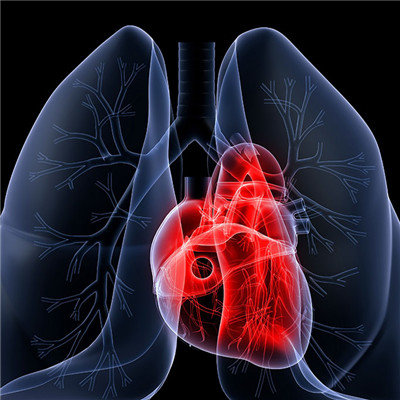Symptoms and signs of pericardial effusion
summary
Pericardial effusion is a common clinical manifestation, is one of the important signs of pericardial diseases, pericardial effusion can be seen in exudative pericarditis and other non inflammatory pericardial lesions, usually confirmed by physical examination and X-ray examination. When pericardial effusion lasts for more than a few months, it will constitute chronic pericardial effusion. Symptoms and signs of pericardial effusion? Let's talk about it
Symptoms and signs of pericardial effusion
Most of the patients were female and the age of onset was climacteric. Patients can often take part in daily work without conscious discomfort. When the symptoms appear, they are shortness of breath and chest pain. In some patients, the symptoms of pericardial obstruction appeared in the early stage of the course of disease, and gradually alleviated or even disappeared with the progress of the course of disease. Many cases of this disease are found in routine physical examination, which is easy to be misdiagnosed as cardiac enlargement. Because there is almost no history of acute pericarditis, it is often impossible to determine the time of the disease. This disease has good hemodynamic tolerance. Because pericardial effusion is gradually increasing, pericardial volume has a certain adaptation to the growth of effusion, which makes the accumulation of a large number of pericardial effusion only cause a slight increase in pericardial pressure, which is manifested as unrestricted pericardial effusion, so pericardial blockage rarely or hardly occurs. Only when pericardial effusion increases suddenly and sharply, the adaptability of pericardium is low, the increase of pericardial effusion is limited, pericardial blockage may occur. Pericardial effusion has been reported to disappear spontaneously. However, because it may be related to the etiology and treatment, it is still uncertain whether the effusion will disappear spontaneously in chronic idiopathic pericardial effusion.

There is no precise and unified definition of this disease. Generally, patients with the following characteristics are classified as this disease: (1) there is a large amount of pericardial effusion, which has been confirmed by UCG; ② The amount of pericardial effusion remained stable during the observation period; ③ Pericardial effusion persisted for at least 3 months; ④ The patient has been excluded from any systemic disease, whether or not it may be related to pericardial effusion; ⑤ Systematic etiological examination was negative. This disease is sometimes referred to as "chronic exudative pericarditis" and "chronic idiopathic pericarditis", but in most cases patients do not have the manifestation of pericarditis, so these names are gradually avoided. The incidence of this disease in pericardial diseases is about 2% - 3.5%.

The disease can be diagnosed by routine chest X-ray examination, UCG, systemic examination and etiology examination, excluding specific lesions such as tuberculous pericarditis and rheumatic pericarditis.

matters needing attention
1. For etiological treatment, such as tuberculous pericarditis should be given anti tuberculosis treatment, bacterial pericarditis should be given antibiotics, etc. 2, patients with chest pain should be given symptomatic treatment. Fibrinous pericardium should not use anticoagulants, otherwise it will cause pericardial hemorrhage. 3, acute cardiac tamponade should be punctured in time. 4, suppurative pericarditis in addition to the use of antibiotics, also need pericardial drainage















